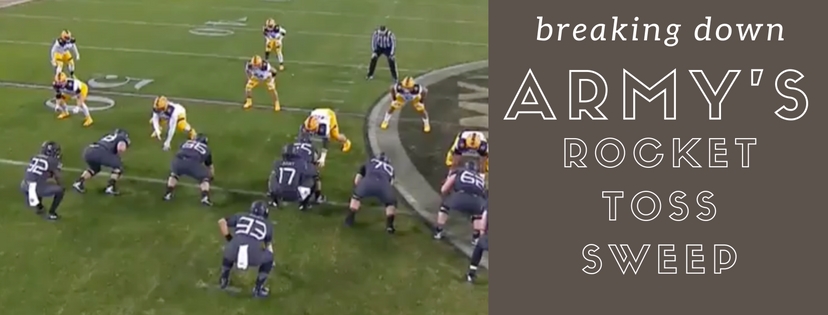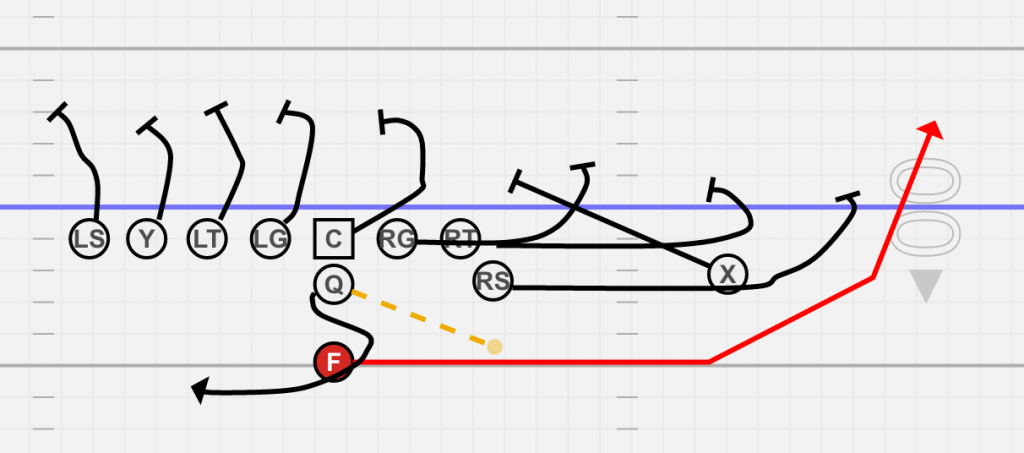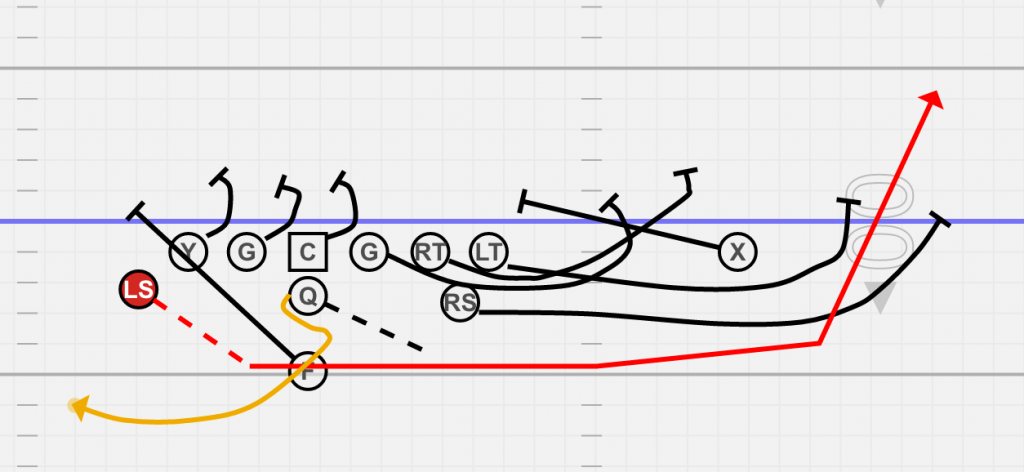Breaking Down Army’s Rocket Toss Sweep

I’ve watched more Army football this season than any other college team. I wasn’t a fan until my son became a West Point cadet – in fact, by all reasoning I should be an Air Force Academy fan first as a former USAF officer. Knowing that I’d see them in the Army Navy game in December I wanted to be prepared and understand their offense.
Army (and Navy, and Air Force) runs a flexbone veer (aka triple option) offense as its base, but there’s a lot of shared heritage with the Wing-T. A lot of Wing-T coaches incorporate option concepts into their offense, usually just double options like the pitch option off the Down play. And a lot of flexbone coaches will incorporate classic Wing-T plays into their offense, though not often with a “series” mindset. For example, I did a film room earlier this year showing Army running the classic Down play in a goal line situation.
At the Army Navy game I saw something very interesting: Army embracing the wide toss sweep, both the FB toss (without pre-snap motion) and the rocket toss sweep to the slot (aka wing) back. I love how Army blocked this play, and they even ran a play action boot (sort of…) off the rocket fake for their longest pass completion of the day. The rocket toss was extremely productive for Army: I count that they ran it 3 times for 10, 11, and 12 yards. Let’s look at how they ran the FB toss first.

When Army ran the FB toss (twice), it was a weak-side play with the tackle eligible. I’m not sure why - Army does a shift and pulls the split end off the line and moves the opposite (strong-side) slot back on the line. Maybe they are trying to show an unbalanced line to the strong side and get the defensive line to shift to a new center, making the weak-side toss more effective. Let’s look at the rocket toss sweep diagram before we talk about the playside blocking, because it is pretty much the same for both plays.

Army loves to run the rocket toss to an end-over alignment, which is effectively an unbalanced line to the playside. In the diagram I show the weakside tackle as a tight end, as if they flip the tackle and TE but I’m not sure what they did personnel-wise.
The split end is going to crack the end man on the line of scrimmage, and for Navy this was usually a DE aligned just outside the TE. Note that Army usually aligns their strong-side slot back between the tackle and TE.
The playside line and slot back are going to do an extended reach block… almost a pull and log. I’m sure flexbone coaches have their own terminology for this. My guess is that their rule is to step flat to playside and work around the first guy outside of them, then pull wide and look for a man to log. The slot back is supposed to be the widest blocker and can probably take his man where he wants to go (kick out or log). The center and backside linemen are, I think, just trying to rip through and scoop to block second level. Sometimes they will cut.
The QB reverse pivots and tosses to the slot back, and I suspect they want the timing to be such that he gets the ball at least as wide as the playside TE, maybe even wider. I think Army does their motion based on cadence timing, and the ball carrier accelerates to full speed quickly. The fullback goes backside and I saw him cut a DE as well as rotate back for a safety cutoff block.
The hardest part about running this play is teaching the playside line and slot to block it properly. I think their teaching points are to not block anybody before the EMOLS: get wide, then look back and log while working upfield.
Finally, here’s some film I broke down for you to see how Army ran these in the Army/Navy game.